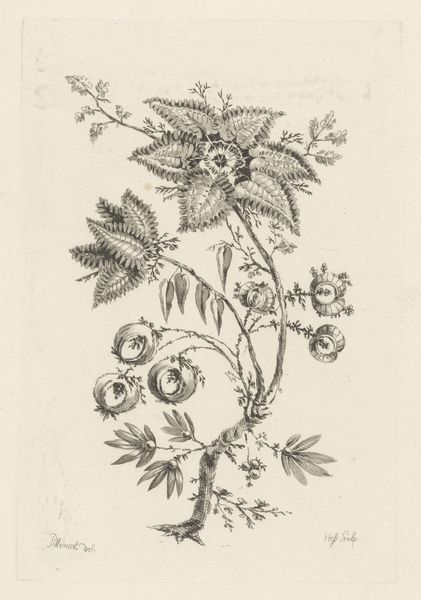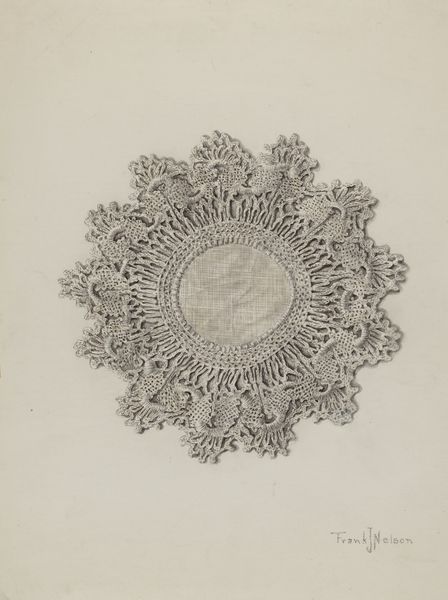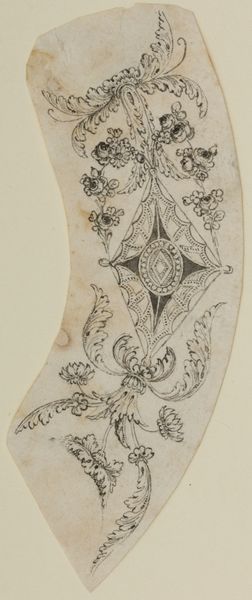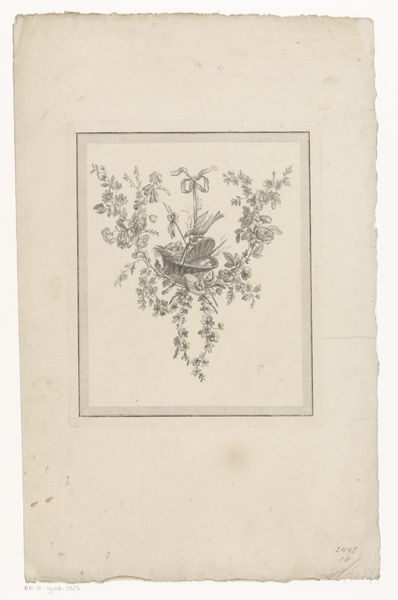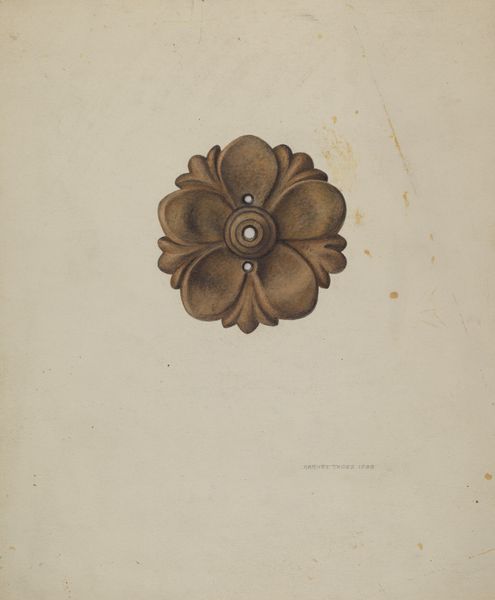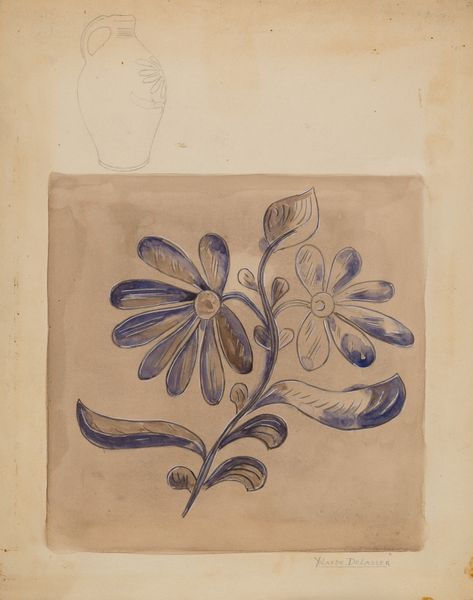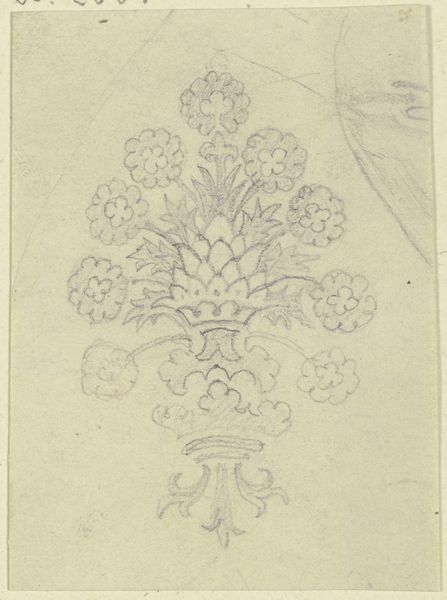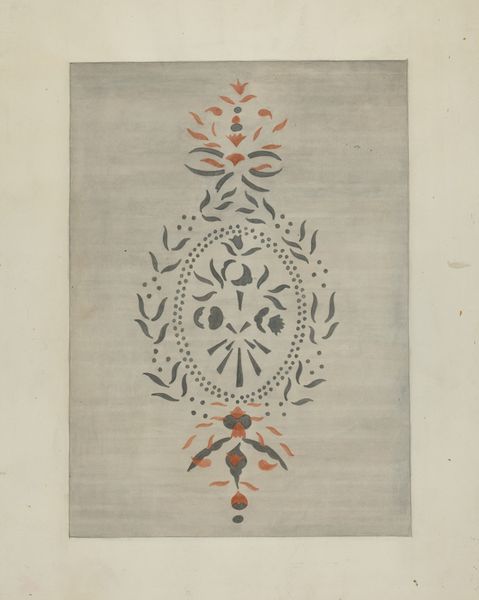
drawing, ink, pen
#
drawing
#
ink
#
geometric
#
pen-ink sketch
#
sketchbook drawing
#
pen
Dimensions: overall: 27.9 x 22.9 cm (11 x 9 in.)
Copyright: National Gallery of Art: CC0 1.0
Curator: Lena Nastasi created this pen-and-ink drawing, “Needlework,” around 1936. Editor: My initial reaction is of a very deliberate, almost obsessive, pattern-making. There’s a handmade, craft-like quality that feels both intricate and perhaps a bit unsettling. Curator: Unsettling? I find it rather captivating, considering the socio-political landscape of the time. To me, this recalls a subversive reclamation of traditionally feminized crafts like sewing or embroidery. In that era, creating detailed handiwork offered women a limited sanctioned creative outlet. Nastasi seems to acknowledge that restriction, perhaps reinterpreting "craft" within more liberated aesthetic boundaries. Editor: Yes, but observe how she replicates circular motifs and repeated stitches. Circular mandalas historically often function as emblems for cosmic unity or divine energies, reflecting harmony or completion. The laboriousness inherent to "needlework" becomes an almost meditative act here. Does this offer Nastasi psychological refuge amidst greater upheaval? Curator: It’s also interesting to consider class. Access to formal artistic training may have been limited based on social standing; thus, traditional crafts became viable creative means for some women despite systemic constraints placed upon gender and socio-economic mobility during that period. Editor: Good point. Now notice how even its seemingly basic structure invokes floral and plant-like designs rendered entirely by thread-like strokes with the fineness suggesting painstaking attentiveness; the whole presents themes associated often feminine domains alongside concepts surrounding life’s generative forces! I suspect there are profound layers being unveiled within its ostensibly simple form. Curator: Indeed. I wonder how her choice to render such traditionally “feminine” techniques challenges prevailing perceptions concerning high and low art? Was it intentional rebellion, quiet resistance, or even a method to circumvent obstacles preventing female artistic agency then. Her biography would illuminate that considerably... Editor: Regardless her intent, her composition conveys themes still incredibly relevant; we discover intricate emotional and symbolic resonance amidst carefully stitched, or rather, sketched patterns mirroring societal textiles past through lens illuminating identity construction from multiple cultural positions too today! Curator: A fruitful reflection – artistic strategies of quiet resistance woven carefully within familiar frameworks, a dialogue echoing throughout time. Editor: It invites closer introspection on recurring symbolism – enduring seeds within what simply looked domestic now made visibly loud!
Comments
No comments
Be the first to comment and join the conversation on the ultimate creative platform.
